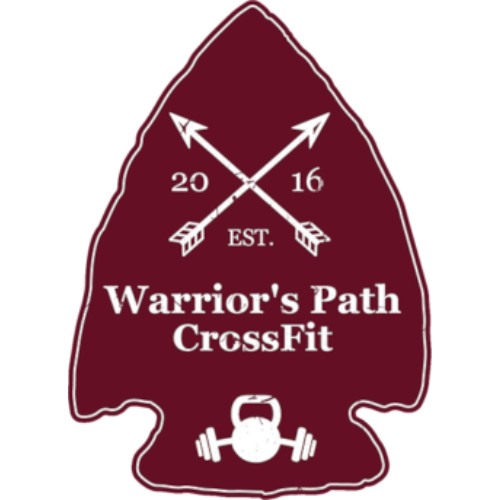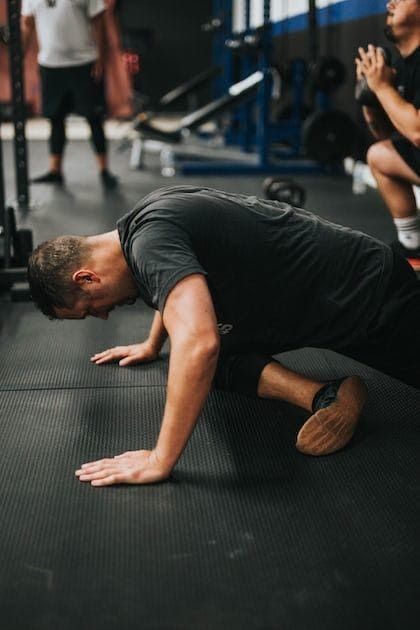Intensity and Heart Rate Zones
Coach Kris Perry-Tedesco • November 1, 2024
The Three Energy Systems & The Balance of Bio Energenetics

Why do program 5 minute workouts vs. 30 minute workouts?
(and all the time domains in between)
Let’s break down the differences between these two CrossFit workouts by looking at the intensity, energy systems used, heart rate zones, and recovery needs:
1. Intensity and Heart Rate Zones
30-Minute CrossFit Workout at Average Zone 3:
Intensity: This workout would be a moderate-intensity session. Zone 3 (around 70–80% of max heart rate) represents a steady aerobic state.
Heart Rate: In Zone 3, your heart rate is elevated but stays within a manageable range, allowing you to sustain the activity for a longer period without burning out.
VS.
5-Minute CrossFit Workout at Average Zone 5:
Intensity: This workout is very high-intensity. Zone 5 (90–100% of max heart rate) pushes your heart rate to the max, close to its peak.
Heart Rate: In Zone 5, your heart is working at or near its capacity, delivering maximum oxygen to muscles.
It’s difficult to sustain Zone 5 for more than a few minutes without significant fatigue.
2. Energy Systems Used
30-Minute Workout (Zone 3):
Primary System:
The aerobic (oxidative) system dominates here, as it’s best for prolonged, lower-intensity exercise.
Support from Glycolytic System:
During intense parts of the workout (like short bursts within the workout), the glycolytic system may provide additional energy.
Benefits:
Builds endurance, improves cardiovascular health, and increases aerobic capacity.
VS.
5-Minute Workout (Zone 5):
Primary Systems:
The ATP-PC and glycolytic systems are the main sources of energy, providing quick ATP without oxygen for high-power output.
Limited Aerobic Contribution:
The aerobic system plays a minor role because there’s not enough time for it to be the primary energy provider.
Benefits:
Enhances power, speed, and anaerobic capacity, and boosts VO₂ max over time
3. Workout Goals and Training Effects
30-Minute Workout (Zone 3):
Goal: Build endurance and improve aerobic fitness.
Training Effect: Improves muscle stamina and efficiency in oxygen usage, which helps with longer WODs or endurance-based CrossFit events.
Recovery: Lower intensity means quicker recovery time, so you’re less likely to feel burned out the next day.
VS.
5-Minute Workout (Zone 5):
Goal: Boost anaerobic power, muscular strength, and explosive endurance.
Training Effect: Increases power output, speed, and lactate tolerance, which can improve performance in sprint-style WODs or competitions.
Recovery: Zone 5 intensity requires longer recovery, as it leads to higher muscle breakdown and increased lactic acid build-up.
4. Fatigue and Recovery Needs
30-Minute Workout (Zone 3):
Fatigue:
Moderate fatigue due to sustained effort, but manageable because it’s mostly aerobic.
Recovery Needs:
Generally shorter recovery, as Zone 3 intensity doesn’t cause as much muscle strain or lactic acid buildup as Zone 5.
VS.
5-Minute Workout (Zone 5):
Fatigue:
High fatigue due to intense effort, leading to “burnout” feeling in muscles and potential soreness.
Recovery Needs:
Requires more recovery time, potentially a day or two, due to the higher stress on muscles and cardiovascular system.
Summary
30-Minute, Zone 3 Workout: Steady aerobic effort, builds endurance, and has moderate fatigue/recovery needs.
5-Minute, Zone 5 Workout: High-intensity anaerobic effort, builds power and strength, and has significant fatigue/recovery needs.
Both workouts are valuable in CrossFit but serve different purposes:
One builds endurance, while the other enhances power and anaerobic capacity.
Let's dig a little deeper....
Bioenergetics is about how living cells manage energy, especially how they create and use it to keep the body functioning.
Think of it like a battery. Just as your phone or flashlight needs to be charged to work, your body needs energy to function. You get this energy from food, which your body converts into a molecule called ATP (adenosine triphosphate). ATP is like a tiny packet of energy that powers everything your cells need to do, like muscle movement, brain activity, and even breathing.
The balance of bioenergetics involves two main processes:
1. Energy Production
(Charging the Battery): Your body breaks down food (like sugars, fats, and proteins) in a process called cellular respiration. This happens in the mitochondria, the "powerhouses" of cells, where food is converted into ATP.
2. Energy Usage
(Using the Battery): When your body needs to do work—like contracting muscles when you walk or think—it "spends" ATP. This energy allows cells to do tasks, and then the ATP is depleted and needs to be replenished by breaking down more food.
The goal of bioenergetics is to keep these processes balanced so that your body has enough energy to function without running out. If your body produces too much ATP or too little, it can disrupt the balance and affect your health and energy levels.
Heart rate is closely tied to which energy system your body is using because different intensities and durations of exercise require different levels of oxygen and energy.
Here’s how heart rate connects to each energy system:
1. ATP-PC System
(Immediate Energy System):
Since this system is for very short, explosive bursts (like sprinting or lifting heavy weights), it doesn’t rely on oxygen and doesn’t demand much from the heart.
Heart rate may rise quickly at the start but won’t reach high levels because the activity is too brief for the aerobic system to kick in fully. So, you might feel a quick spike but not a sustained high heart rate.
2. Glycolytic System (Anaerobic System):
In this phase, your body still isn’t using oxygen fully, so the heart rate increases to deliver more oxygen to muscles in anticipation of greater demands.
As you push through moderate-duration, high-intensity exercise (like a 400-meter run), your heart rate climbs toward the upper end of your anaerobic zone (usually around 80–90% of your maximum heart rate) to help sustain this effort and deal with the buildup of lactic acid.
3. Oxidative System (Aerobic System):
For longer, lower-intensity activities, the oxidative system takes over, relying on oxygen to generate ATP. To provide enough oxygen, your heart rate will stay elevated but usually at a lower, steady rate compared to anaerobic activities.
For moderate aerobic activities, your heart rate may stay in the 60–80% range of your maximum heart rate. This lets you sustain the exercise for longer without fatiguing.
In essence:
Short sprints (ATP-PC): Short, quick heart rate rise but not sustained.
Moderate time/effort (Glycolytic): Higher heart rate (around 80–90%) to support anaerobic work.
Longer, steady activities (Oxidative): Moderate, steady heart rate (60–80%) for sustained aerobic energy.
The more intense the exercise, the higher your heart rate goes, reflecting the body’s need for faster energy replenishment and greater oxygen delivery to muscles.
Previous WODs
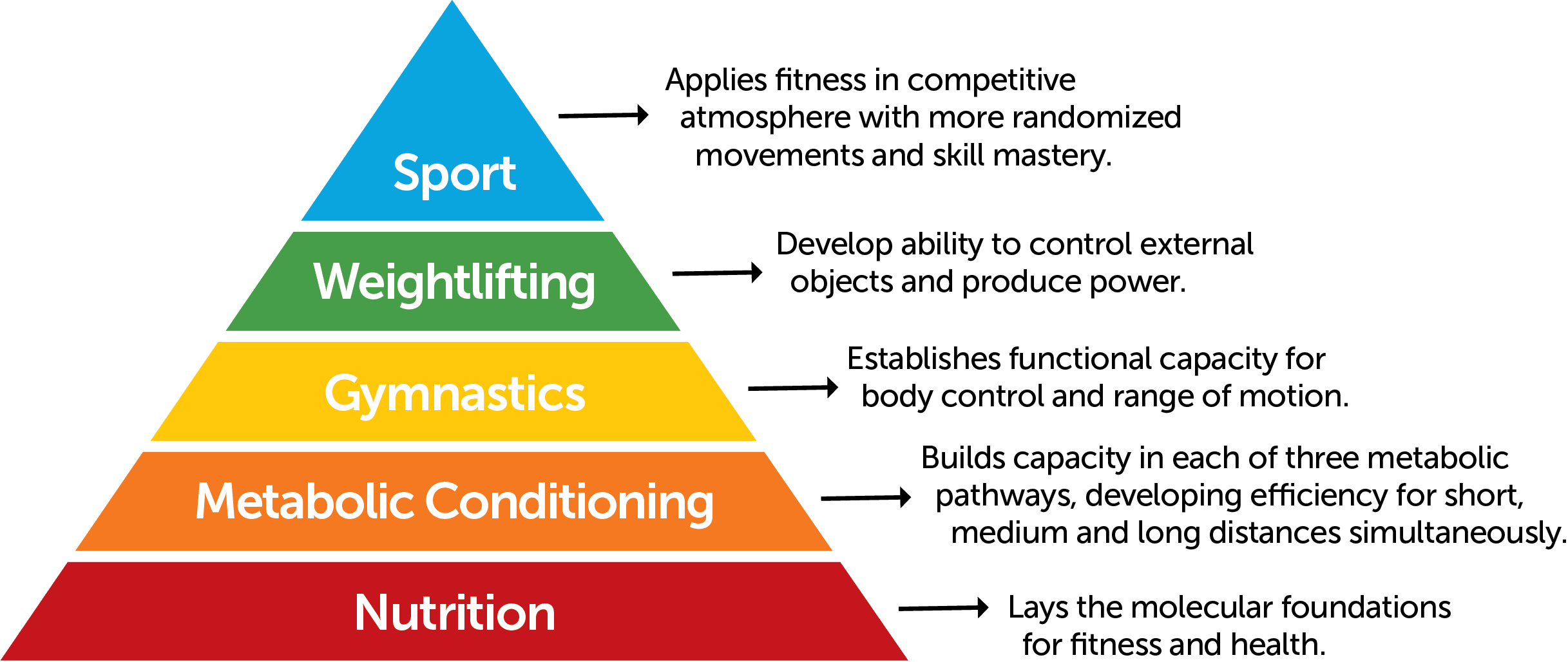
One of the things I love most about CrossFit is that it gives us real evidence—inside and outside the gym—that we are in control of how we age. Not by chasing perfection, but by consistently showing up, putting in the work, and recovering with intention. This November, my WHOOP data gave me a clear snapshot of what’s working and where I can tighten up my habits. And as a coach, I want to share this because healthy aging isn’t random. It’s trainable. It’s measurable. And it’s available to every single one of us. My Pace of Aging : Slowing Down the Clock The biggest win this month? My Pace of Aging slowed from 0.6x → 0.4x. That means my body is aging slower than expected. This lines up with what the research says: maintaining aerobic capacity and muscle mass (two things CrossFit gives us in spades) is strongly linked to slower biological aging and better long-term health. Harvard and the British Journal of Sports Medicine have both published studies showing that interval training plus strength work are two of the most powerful levers we have for longevity. We don’t age passively. We age according to what we practice. Habits Matter! Training Metrics That Matter My top activity this month was Functional Fitness —no surprise there. Here’s a quick snapshot: VO₂ Max improved to 40 509 minutes in aerobic zones (1–3) 159 minutes in high-intensity zones (4–5) Hit 10+ strain on 20 days Average sleep: 7 hrs 50 min Sleep consistency : 77% This is the blend that improves heart health, builds lean tissue, supports metabolism, and boosts energy. And the research supports this: High-intensity training improves VO₂ max, the #1 predictor of long-term cardiovascular health. Strength training reduces all-cause mortality and protects bone density and muscle mass. Basically: the CrossFit methodology works! Recovery : The Quiet Driver of Longevity This month I logged : 7 green recoveries 5 red recoveries 30 total tracked recoveries Recovery is where the adaptation happens. Green days tell me my system was primed for work. Red days tell me to adjust my intensity, walk more, hydrate, and manage stress. Healthy aging isn’t about avoiding stress—it’s about improving your capacity to recover from it. Sleep, nutrition, breathwork, sunlight, mobility… these things add up. Science says the same thing: regular physical activity + consistent sleep patterns are two of the strongest predictors of long-term cognitive and cardiovascular health. Movement Outside the Gym Still Matters I took 256,800 steps this month—down from last month—and I felt it. My resting heart rate moved from 60 → 63. Walking is one of the simplest longevity tools we have. It improves blood sugar, digestion, metabolism, stress, and overall cardiovascular health. CrossFit gives us intensity. Walking gives us the foundation. We need both. What I’m Taking Into Next Month Here’s what I’m learning as both an athlete and a coach: Aging healthfully is built on consistency, not perfection. The combination of strength training + aerobic conditioning is unbelievably powerful. Recovery habits matter as much as training habits. Small behaviors—steps, sleep, hydration—show up in long-term health markers. We can absolutely take control of how we age. CrossFit trains you for the next workout, yes. But it also trains you for the next decade. I should also note that I was sick for about 10 days during this timeframe, which definitely influenced a few of these metrics—especially my step count and overall energy output. It was a good reminder that health isn’t about avoiding setbacks; it’s about how quickly we return to our routines once we’re back on our feet. Even with that downtime, the consistency before and after those sick days still moved the needle in a positive direction. What’s Coming Next I’ll be turning this into a longer educational series on: How CrossFit improves metabolic health as we age Why VO₂ max matters more than the number on the scale Strength training after 40 Using sleep and recovery to influence biological age Training strategies for long-term health vs. short-term intensity If you want to age with strength, mobility, confidence, and purpose, stay tuned. There’s so much more to dive into. Here’s to aging like an athlete, not an accident. — Coach Kris 🏹

No one remembers exactly when it started, but at some point, a phrase began echoing through the gym: “Finish like it matters.” It wasn’t shouted. It wasn’t printed on a t-shirt. It was just something the community started to believe. At first, it was about the workout: Don’t sandbag the last 10 seconds. Don’t give up on that final pull up. Don’t coast through the cool-down like it’s optional. But over time, it grew into something bigger. People started living that way. They showed up not just to sweat—but to grow and learn. Not just to check the box—but to lead by example and move with intension. Not just for PRs—but for purpose. One morning, an older member who’d been quiet for months hit a 200 lb deadlift for the first time. Everyone roared. She stood there, hands shaking, and said, “I didn’t think I could still get stronger at my age.” Another member brought in his teenager—“just to try it”—and by the end of class, they were working side by side, breathing hard, laughing like teammates. Bill started cheering newcomers through their first workouts, reminding them to start with mechanics, stay consistent, and earn their intensity. He was no longer just a survivor of Uncle Pukie. He was a mentor. A movement legacy. The final rep isn’t always the heaviest. Sometimes it’s the slowest, the cleanest, or the one you help someone else finish. And in that rep—in that choice to hold the standard—you realize: This was never just about fitness. It was about showing up for your life. Every rep. Every day. Every age. Every version of yourself. And that’s the real endgame. To fuel. To move. To grow. And when it’s your turn to take the final rep— to finish like it matters. ✨ This concludes the Hollow Body Heroes Series. Your journey isn’t over. It’s just beginning.

It began subtly. A few cleaner lunches. Less gas station energy drinks. Someone swapped a protein bar for actual protein. No one said anything… but something was up. Bill, once the proud bringer of post-WOD glazed donuts, showed up one Friday with—gasp—hard-boiled eggs and a banana. Everyone stared. He shrugged and said, “I just felt better after doing it last week. My deadlifts didn’t feel like death.” Whispers began to spread. “Have you seen Jill’s pull-ups since she started eating more fruits & veggies?” “Pretty sure Mike gave up late-night ice cream… he’s squatting like a machine.” Coaches had been saying it for months, but now it was hitting different: “You can’t out-train your fork.” “Fuel like you want to recover.” "Eat like you respect yourself." People started actually reading food labels. Water bottles multiplied. Meal prep memes popped up in the group chat. Even Bill, who once believed that Pop-Tarts and chocolate milk were a viable post-wod recovery protocol, started asking real questions: “So... how many grams of protein should I be eating?” And the craziest part? They didn’t get less fun. They just got faster recoveries, better moods, and way fewer mid-WOD regrets. They didn’t turn into robots. They just started fueling like humans who respected their own effort. It wasn’t a diet. It was a shift. It is a lifestyle. A quiet conspiracy of whole foods, hydration, and intentional choices that made every lift stronger, handstand longer, and every post-WOD hangout feel like earning something. And the best part? No one missed the donuts. Coming Soon: Part 8 — “The Final Rep” (A story about legacy, mindset, and what it really means to finish strong—on the floor, and in life.)
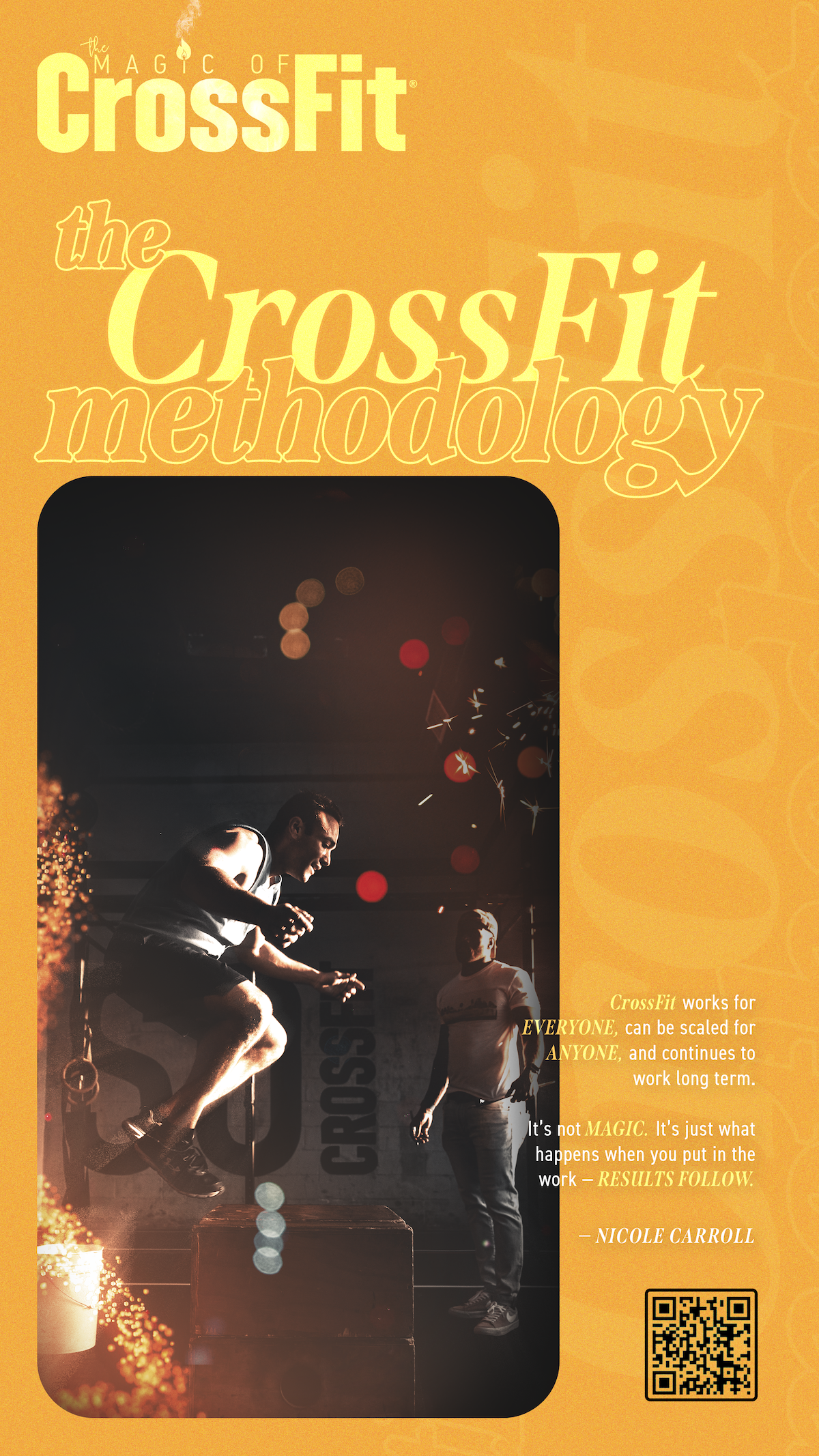
The gym had calmed into a rhythm—like a well-oiled GHD machine. No one expected to “get fit fast” anymore. They understood the game now. This wasn’t a 6-week shred. This was a forever pursuit. Enter: The Legends of the Long Game. They were the quiet ones. The ones who never missed a Monday. You might not notice them at first. They weren’t flashy. No PR parades. No shirtless barbell drops. But they were always there. Moving with intention. Logging workouts. Asking questions like: “How’s your sleep?” “What are you eating post-WOD these days?” “Did you pace that or redline it?” They were students of the process. Masters of the basics. And dangerously consistent. Newer athletes started catching on. They’d ask the coach for extra mobility tips. They’d track their hollow body holds by the second. They'd scale smarter instead of trying to survive workouts they weren’t ready for. And then… the results came. Not fast. Not flashy. But deep, durable, and undeniable. The Legends didn’t post their PRs. But they helped others get theirs. They didn’t chase the leaderboard. They chased longevity. They knew that progress wasn't about one big day—it was about a thousand quiet ones. They were proof that you don’t have to be the loudest in the gym to become the strongest. You just have to keep showing up. Keep moving. Keep learning. And over time? You become legendary. Coming Soon: Part 7 — “The Nutrition Conspiracy” (Where the box discovers the sneaky truth behind food, energy, and why they stopped thinking about donuts on deadlift day.)

Muscle vs. Fat: The Real Story You may have heard “muscle weighs more than fat,” but what that really means is that muscle is denser. A pound of muscle takes up less space in your body than a pound of fat. So as you gain strength and lose fat, your weight might stay the same—but your clothes fit better, your shape changes, and you feel stronger. Here’s what’s actually happening: You’re building lean muscle You’re losing body fat You’re improving your body composition And body composition is a far better indicator of health than weight alone. Why This Matters More Than a Number Think about this: Would you rather weigh less and feel weak, tired, or soft? Or weigh the same (or even more!) and feel strong, energetic, and lean? When you shift your focus from the scale to how you feel, perform, and move—you unlock real progress. 📏 Measurements change. 👖 Pants fit differently. 🏋️♀️ You lift more, move better, and recover faster. What You Can Track Instead We recommend tracking: Progress photos (front/side/back) Strength & endurance improvements Inches lost How your clothes fit How your energy and confidence grow TL;DR: 🚫 The number on the scale doesn’t define you. ✅ Muscle is dense and powerful—it shapes your body and fuels your metabolism. 💥 Focus on body composition, not just body weight. If you're not sure how to make sense of your progress, let's talk. The Green Mind Project coaching is here to help you train smarter, eat better, and feel amazing in your body—no matter what the scale says. https://procoach.app/coachkris

Just when everything seemed balanced—when the floor was filled with focused breathing, well-paced workouts, and beautifully braced hollow body holds—they returned. The Whiteboard Warriors. You know the type. First to yell “TIME!” like they just won the CrossFit Games. Slightly allergic to scaling correctly. Deeply committed to beating you… even if it means shaving a few reps when no one’s looking. They came in like storm clouds—old habits resurfacing, energy at 110%. Rick eyed them warily. “I thought we defeated them back in the burpee dark ages.” But the Whiteboard Warriors weren’t villains. They were just... stuck in old behavior patterns. Stuck in the old narrative: faster is better. Heavier is stronger. Winning is everything. It rattled the box at first. A few others started rushing their reps again. Hollow body holds got a little sloppy. The ghost of Uncle Pukie even peeked around the corner, curious. But the Hollow Body Heroes? They knew what to do. They didn’t confront with ego. They didn’t shame, argue, or compete. They simply led by example. They moved with intention. They scaled workouts when it made sense. They cheered loudest for the person finishing last—because effort, not time, was the standard. One of the coaches even pulled a Warrior aside after class and said: “It’s okay to slow down. Anyone can go fast. Few can move well. That’s what lasts.” And the wildest thing happened… the Whiteboard Warriors listened. One by one, they started asking questions. “Should I be bracing my core like this?” “Should I drop weight to improve form?” “What is a hollow body hold, and why does it burn like betrayal?” Little by little, they stopped chasing names on the board—and started chasing better movement. The culture held. The mission stayed intact. The community grew stronger, not just in body—but in values. Because in this box, there was room for intensity—but only after mechanics and consistency. There was room for competition—but only if integrity came first. And if you walked in now and looked around, you’d see something incredible: Whiteboard Warriors and Hollow Body Heroes working side by side. Sweating together. Pacing each other. Becoming better humans, not just better athletes. Coming Soon: Part 6 — “Legends of the Long Game” (Where recovery, patience, and the quiet art of showing up rewrite what success really means.)

It didn’t happen overnight. There was no parade. No trumpet fanfare. Just small moments stacking up, quietly, until suddenly—everyone noticed: The community had leveled up. It wasn’t just that people were hitting new PRs (although there were plenty of those). It wasn’t just that hollow body holds now lasted longer than bad country songs. It wasn’t even that Rick could now string together strict pull-ups without looking like he was fighting invisible demons. It was deeper than that. There was a new energy inside the box—one built on support, standards, and shared success. People weren’t just chasing their own goals anymore; they were pulling others along with them. Veterans no longer cared about "winning the whiteboard." They cared about building a foundation—for themselves and everyone else around them. Coaches still prompted reminders about mechanics and this time people listened. And members corrected themselves—sometimes even better, helped the person next to them tighten their hollow hold, or scale their workout smartly. Consistency wasn’t forced. It was culture. And when it was time for intensity? It wasn’t reckless. It was earned, respected, and directed. Every sprint, every lift, every hold had a purpose behind it. People paced smarter. Cheered louder. Lifted heavier—physically and mentally. The box became more than just a place to sweat. It became a place where standards mattered. Where hard things were done the right way, and growth was celebrated, not envied. And if you listened carefully after a long Saturday partner WOD, you could still hear someone say: "Remember Uncle Pukie ?" Everyone would laugh—because they knew: they had come a long way. This was more than fitness. This was a community that knew how to fuel, move, and grow—together. And the best part? They were just getting started. Coming Soon: Part 5 — “The Return of the Whiteboard Warriors (and How the Heroes Handled It)” (Where ego tries to sneak back in—and the community rises above.)
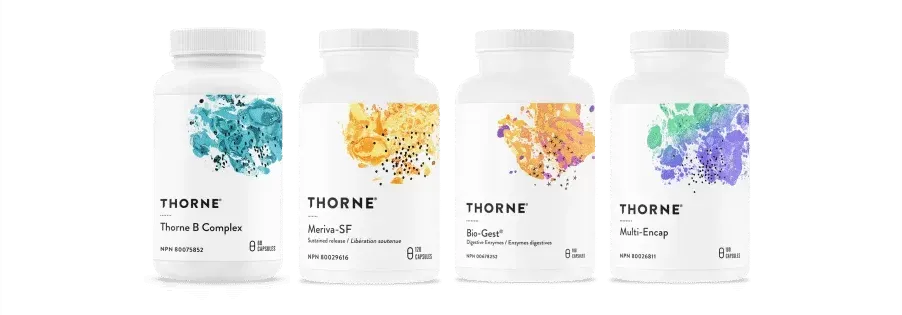
Lack of sleep, being stuck at a desk, too many late nights, over-exposure to the sun, and an unbalanced diet – each of these components of our modern lifestyle affects your body at the cellular level, leading to depletion of the important coenzyme, NAD+, and the resulting symptoms of early aging. Along with the effects of life’s daily stressors, the natural aging process causes your NAD+ level to decline. A decreased level of NAD+ slows down integral body functions, resulting in reduced vitality and early aging.* With NiaCel, you can make age feel like just a number. By adding Thorne’s NiaCel 400, with Nicotinamide Riboside (NR), to your daily wellness routine, you can boost your body’s level of NAD+, helping defend your body against the effects of early aging and optimizing your daily vitality.* The added support for NAD+ in NiaCel 400 is ideal for athletes, as well as those individuals with conditions that require more robust support for NAD+ levels.* Everyday Benefits of Thorne's NiaCel 400: NiaCel is great for more than healthy aging. Supplementing your healthy lifestyle with NiaCel 400 can also provide the following daily benefits: Increased level of NAD+ from an exclusive form of NR* Support for exercise efficiency, to help you reach your health and fitness goals* NR promotes cellular energy production in every cell of your body – helping you feel vibrant* NR supports a normal sleep-wake cycle for better nights and refreshing mornings* The betaine in NiaCel 400 promotes optimal methylation – supporting healthy daily detox processes and balanced brain chemicals* Additional NR provides optimal benefit for athletes, competitors, and individuals requiring increased support for a depleted NAD+ pool* Long-Term Benefits of Thorne's NiaCel 400: Although nothing can truly stop the process of aging, NiaCel 400’s ability to increase the body’s level of NAD+ and increase methylation is an excellent way to support healthy aging – supporting your long-term health and fitness goals by: Boosting NAD+ production to help your body and brain fight the effects of chronological aging* Supporting healthy cellular repair and metabolism* Promoting cellular energy production in the mitochondria* Supporting a weight management program* Helping protect the DNA in every cell from damage* Betaine promotes lean body composition by helping reduce body fat without negatively affecting muscle mass* What is NAD+? NAD+ – nicotinamide adenine dinucleotide – is a coenzyme found in every cell. Think of NAD+ as fuel for the cellular gas tank. As a key coenzyme, NAD+ plays an integral role in your daily and long-term health goals. The everyday level of your cellular energy production, as well as the regulation of your sleep-wake cycle, are beneficially influenced by NAD+.* Healthy levels of cellular energy and a proper sleep rhythm help maintain the pep in your step and a clear head. Because athletes need to know their supplements are trustworthy and compliant, every batch of an NSF Certified for Sport® product is tested for compliance with label claims and to ensure the absence of more than 200 substances banned by many major athletic organizations. Shop Warrior's Path Dispensary on Thorne's Website through this link here

After the Great Encounter with Uncle Pukie (may he stay forever banished), something shifted inside the gym. Gone were the reckless sprint-outs and “redline or bust” attitudes. In their place? A powerful focus. People started training differently. They stopped throwing themselves at workouts like gladiators trying to impress the each other. They started showing up like technicians. The warm-ups became more purposeful. Hollow body holds weren’t just rushed through anymore—they were owned. Held longer. Held better. (And okay, maybe held with a little bit of quiet whimpering, but still.) The old rally cries of “Go faster!” were replaced with: “Move better.” “Breathe.” “Hold the standard.” "Maintain proper range of motion." It wasn’t sexy. It wasn’t flashy. But it worked. Mechanics came first. Athletes drilled positions until they were automatic. Scaling was seen as smart. Consistency followed. Week after week. One good rep after another. Not chasing PRs every day, but stacking quality over time like bricks in a fortress. And then came intensity. But this time, it was earned, and it was deadly effective. When it was time to go hard, it was earned fire, not wild panic. Workouts that used to destroy them now made them stronger. They could pace. They could push. They could plank like statues and lift like Warriors. Around them, the world looked a little different too. Friends and family noticed they stood taller. Smiled more. Handled stress like pros. They weren’t just getting fit. They were becoming Hollow Body Heroes—strong in posture, strong in mind, steady under pressure. And Uncle Pukie? He still lurks, sure. But these days, he doesn’t stand a chance. Coming Soon: Part 4 — “The Day the Community Leveled Up” (Where PRs are celebrated, new faces are welcomed, and the ripple effect of one healthy choice turns into a wave.)
Stop missing out
Lorem ipsum dolor sit amet, consectetur adipiscing elit, sed do eiusmod tempor incididunt ut labore et dolore magna aliqua.
